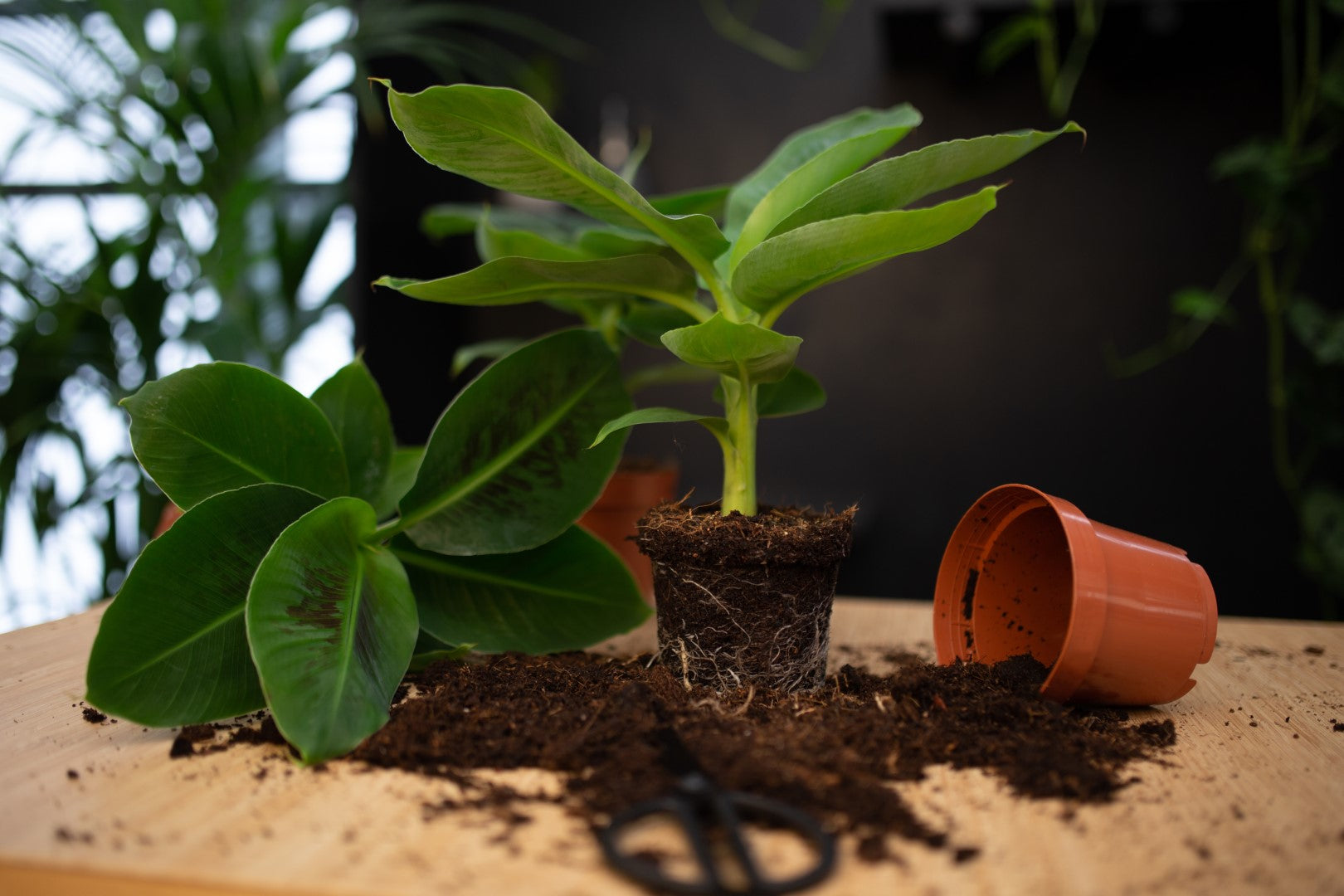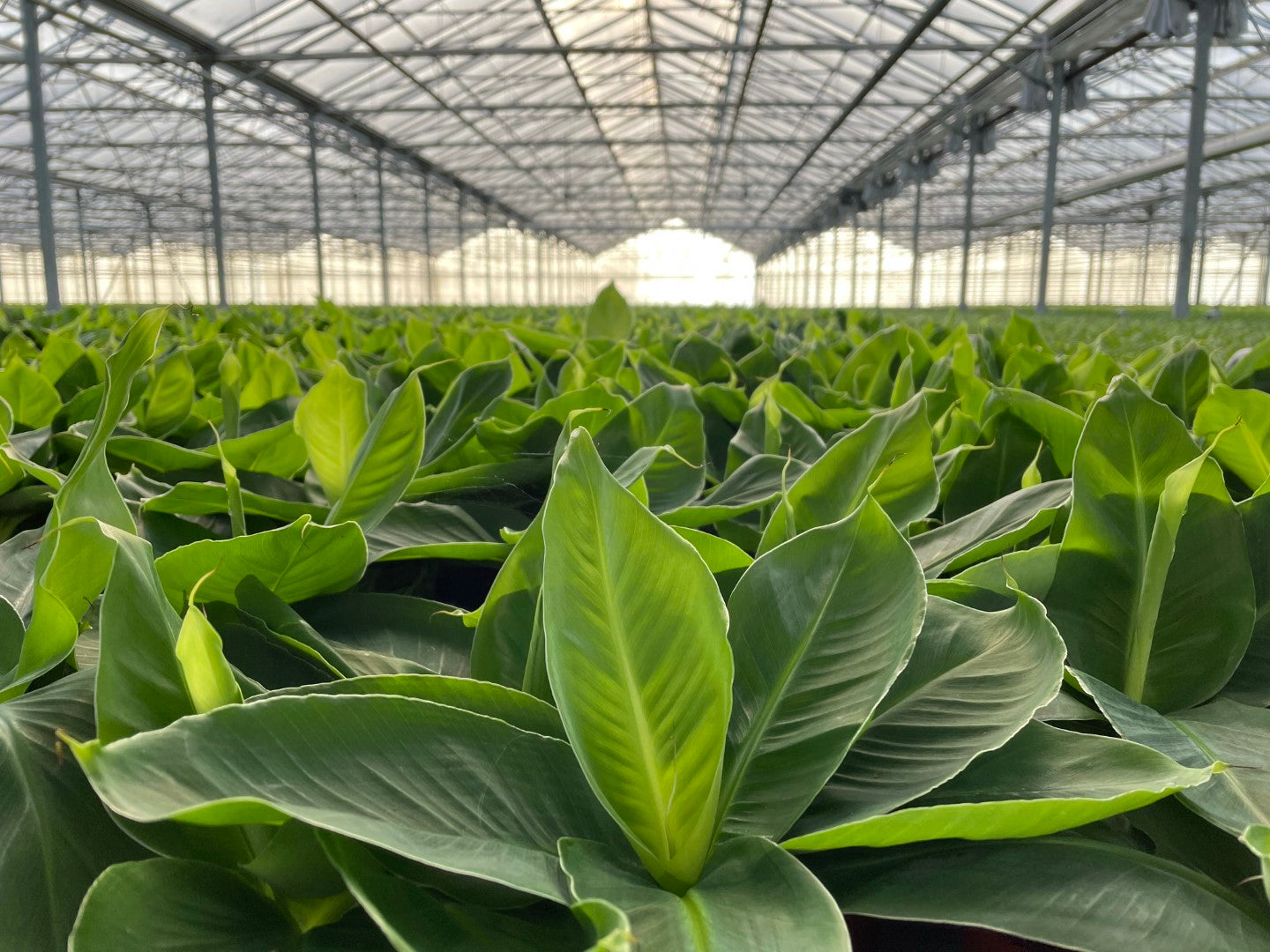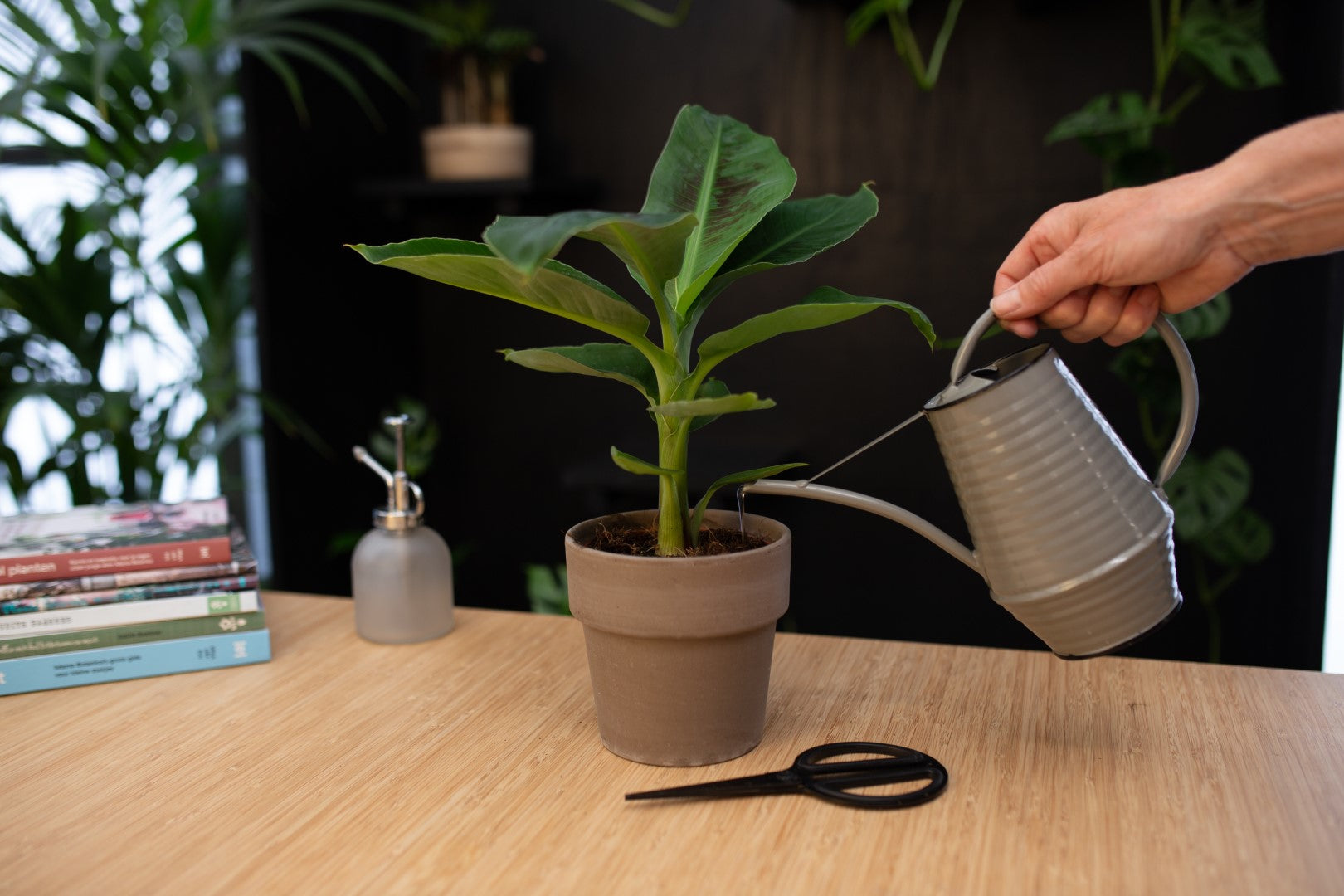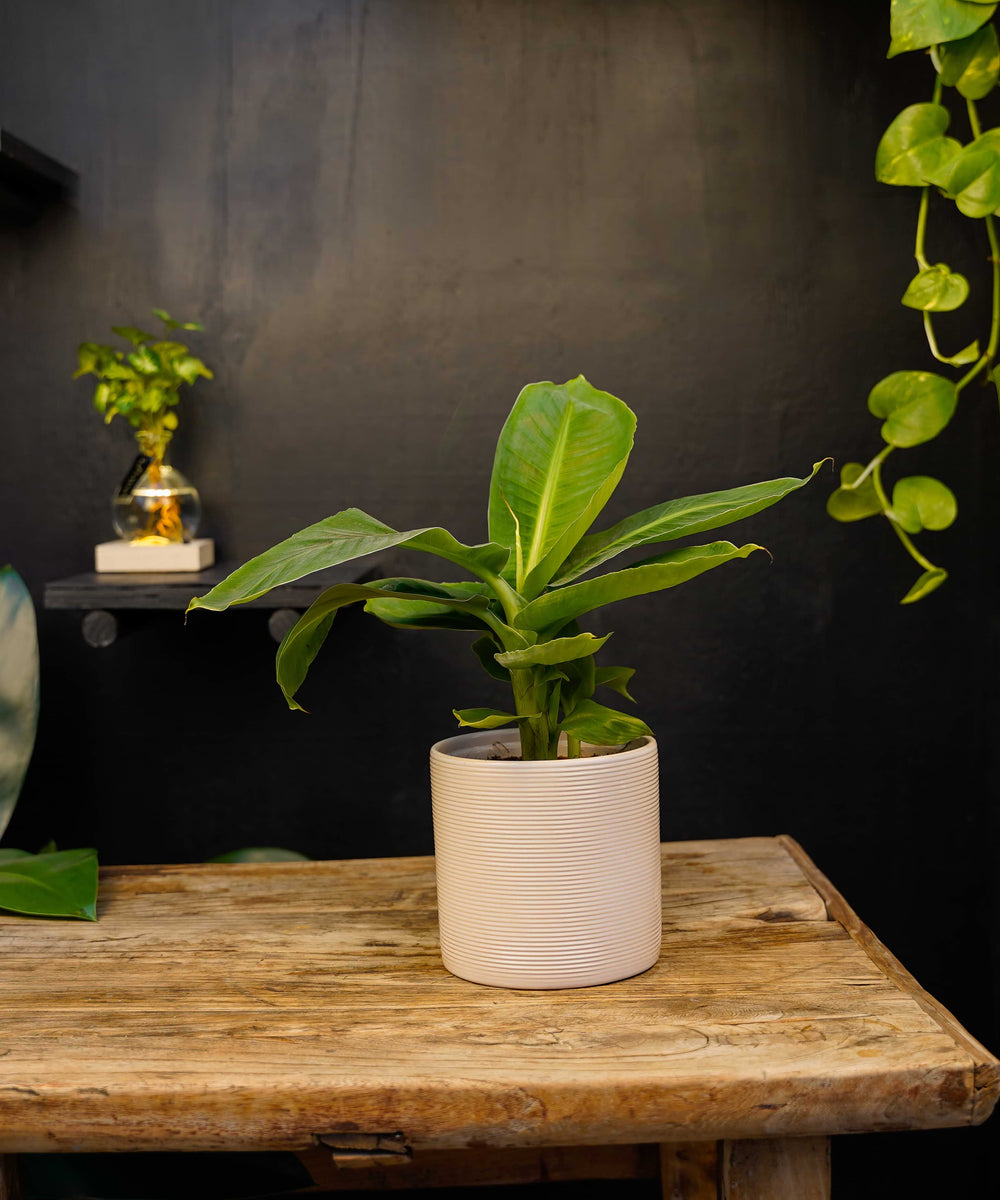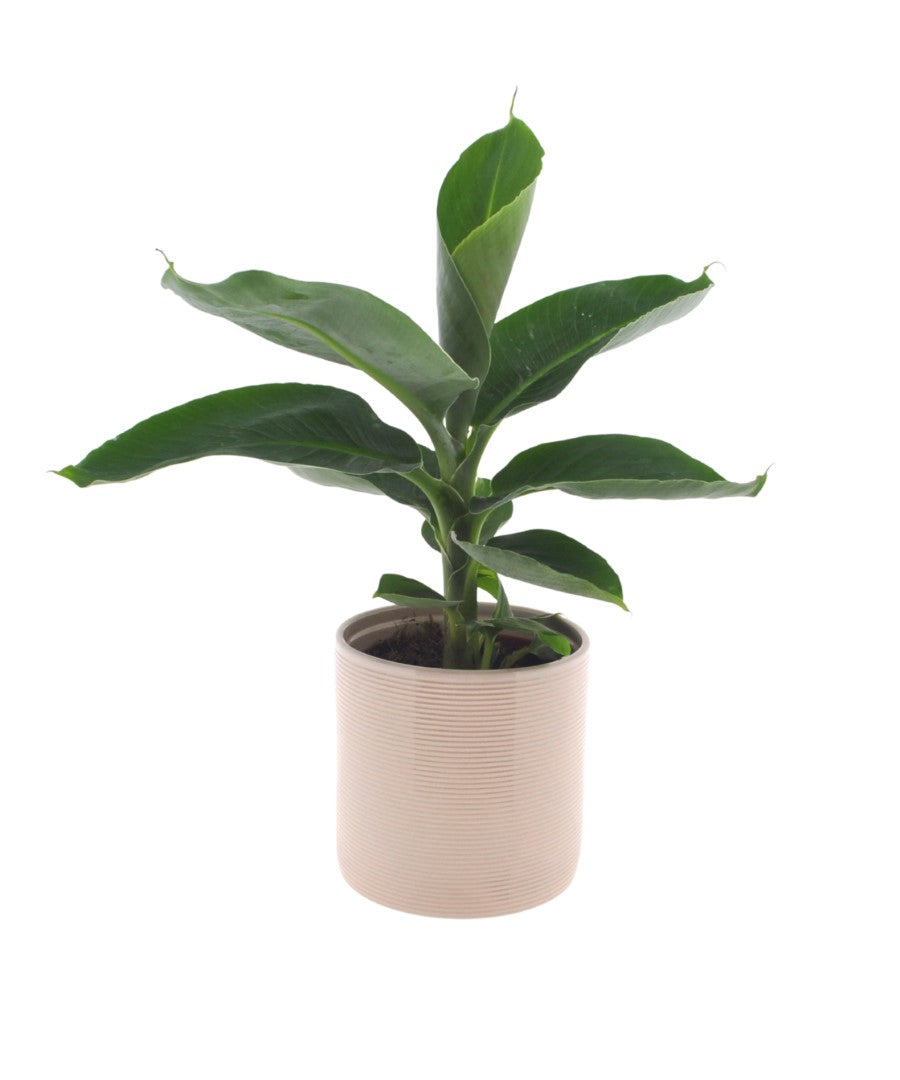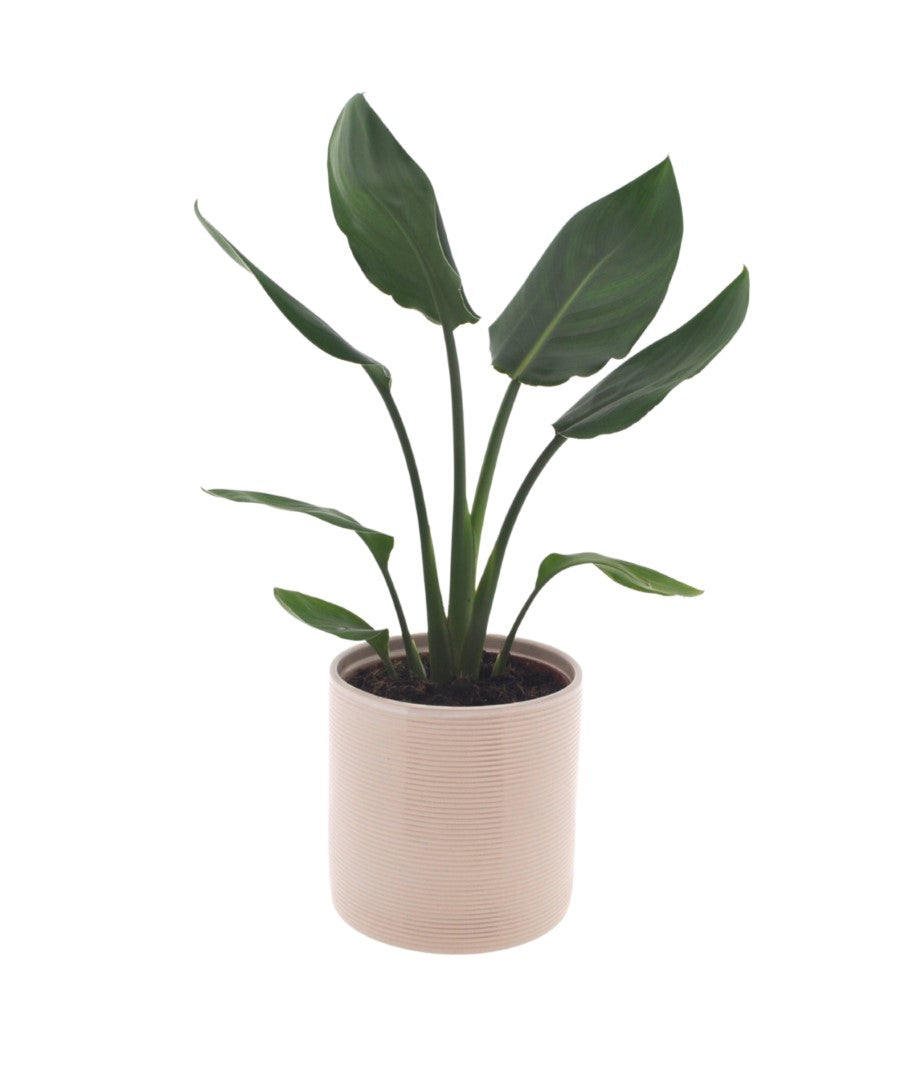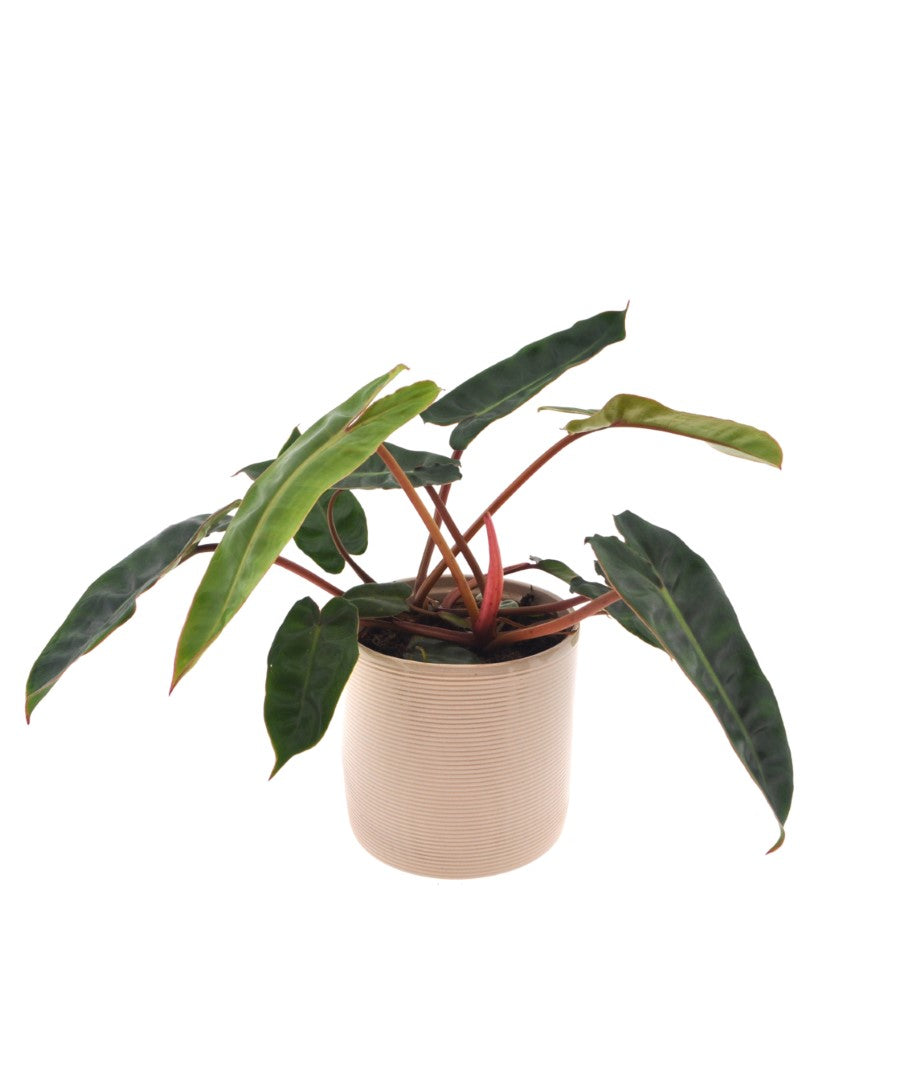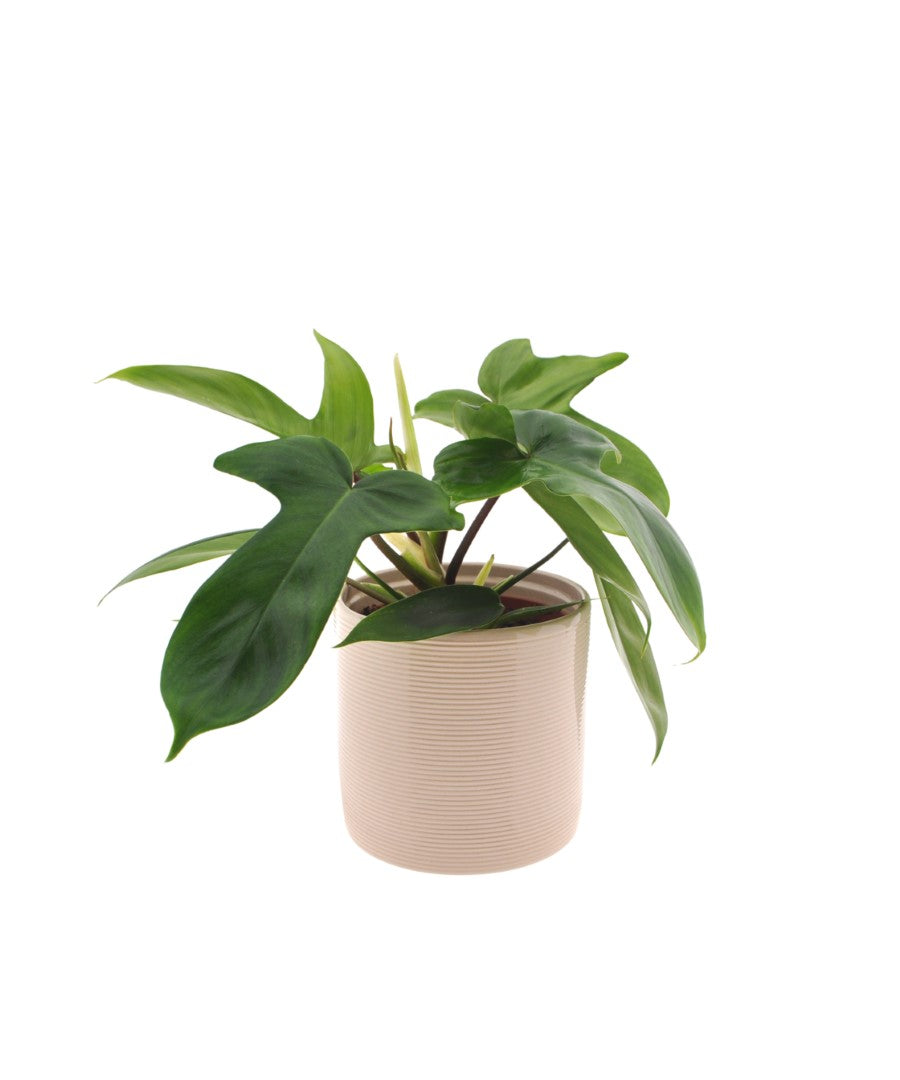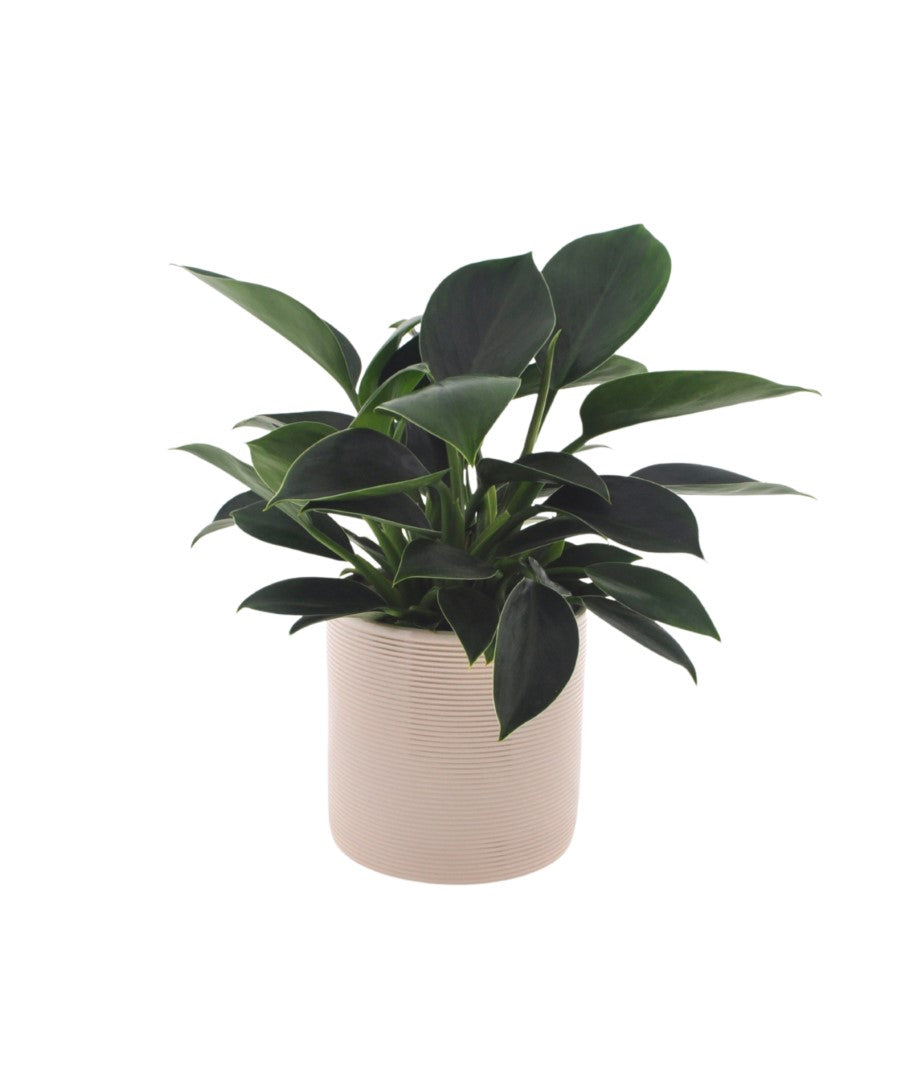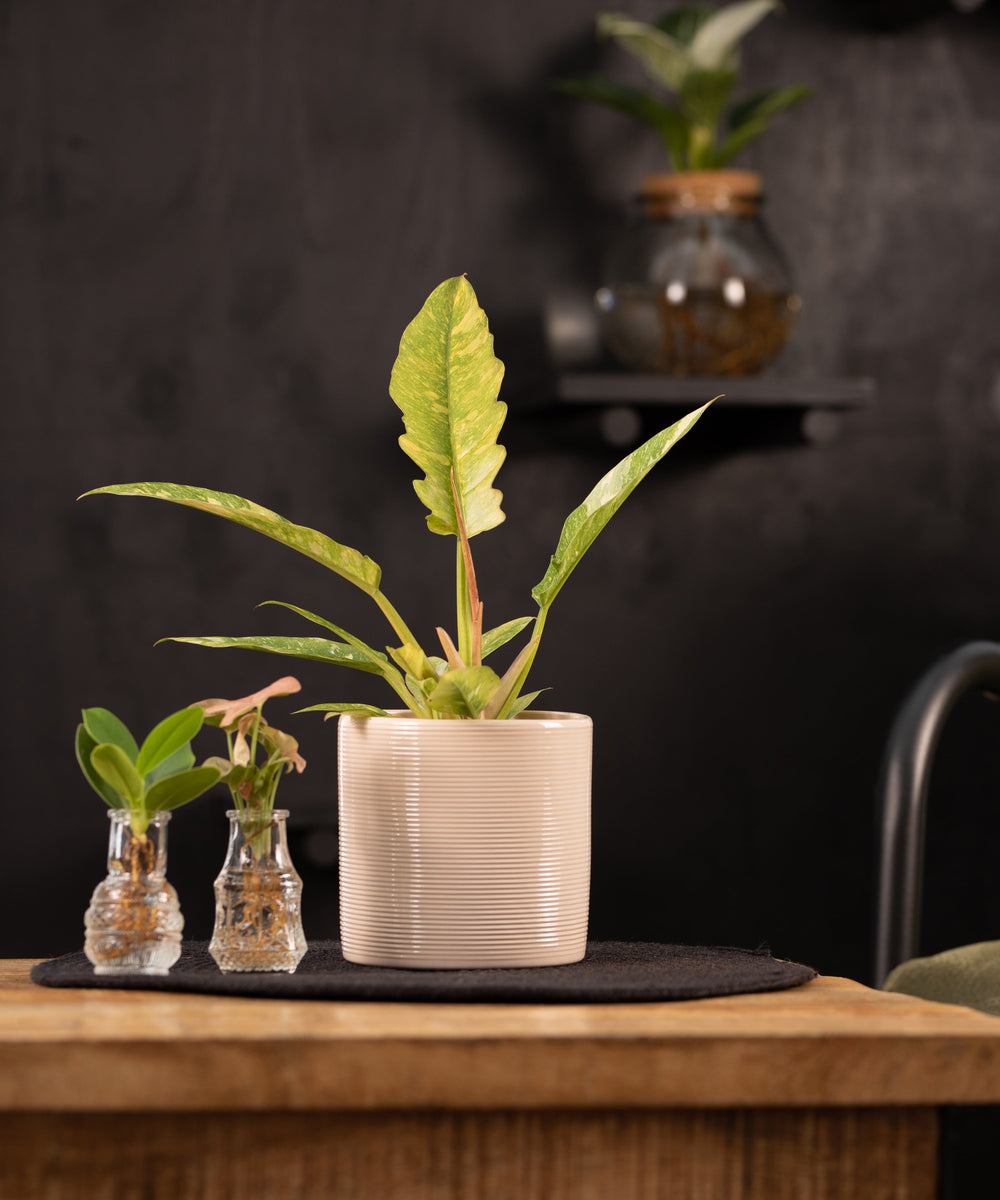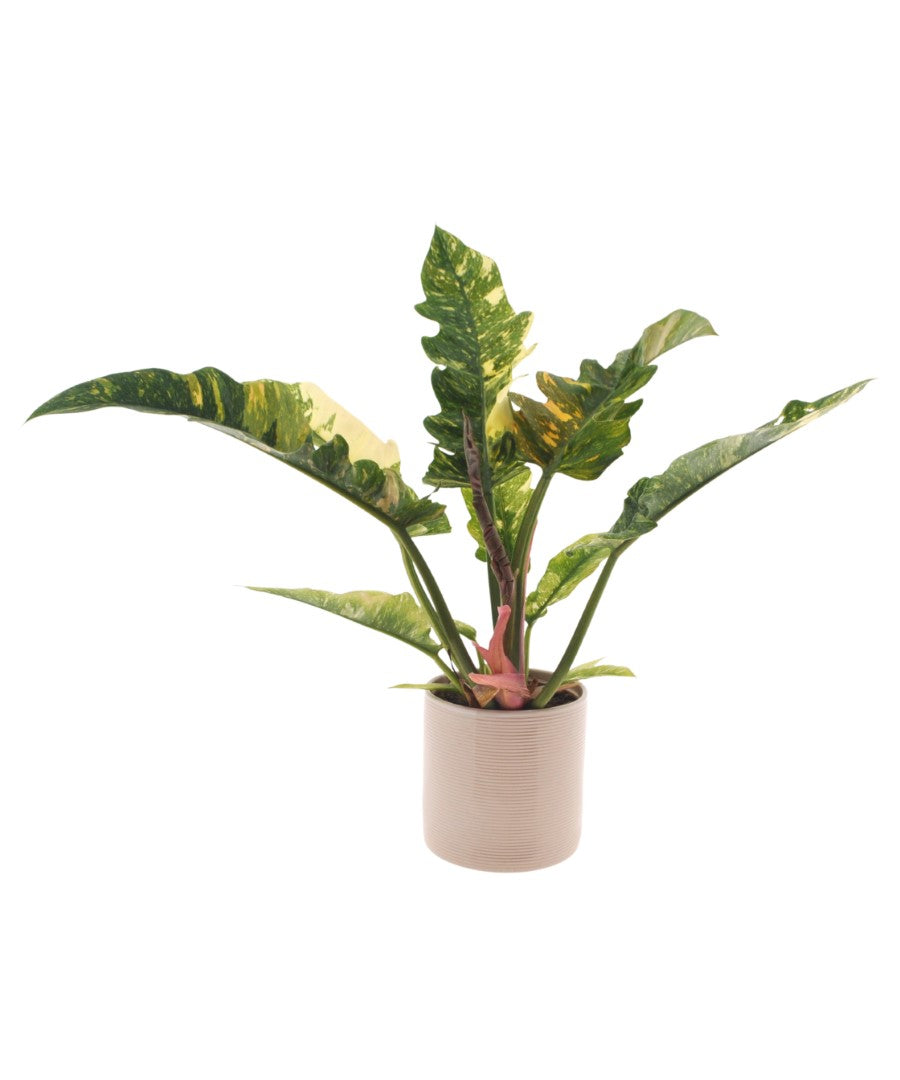Ontdek onze Bananenplant en meer..
Alles wat je wilt weten over de verzorging van je Bananenplant
De Bananenplant is een exotische schoonheid die de sfeer in je huis direct naar een hoger niveau tilt. De Bananenplant is ook wel bekend als Musa. Deze tropische plant is afkomstig uit de warme regio’s van Zuidoost-Azië. Met haar weelderige groene bladeren geeft ze een gevoel van tropische pracht, en ze heeft een onmiskenbaar charmante uitstraling.
Het vinden van de juiste locatie voor je Bananenplant is van essentieel belang voor haar welzijn. Deze plant gedijt het beste op een plek met helder, indirect licht. Te veel direct zonlicht kan de bladeren beschadigen, terwijl te weinig licht de groei kan vertragen.
Plaats je Bananenplant daarom in de buurt van een raam op het noorden, oosten of westen. Op die manier kan zij genieten van het milde ochtend- of avondlicht.
Zorg ervoor dat de temperatuur in de ruimte waar de plant staat tussen de 18°C en 24°C blijft. Bananenplanten houden van warmte en voelen zich niet prettig in koude tochtige omgevingen.
Nee, onze Bananenplant is echt bedoeld als kamerplant en niet geschikt voor buiten.
Een goede watergift is van cruciaal belang om je Bananenplant gezond en gelukkig te houden. Hier zijn enkele belangrijke punten om te onthouden:
Houd de grond licht vochtig, maar vermijd overmatig water geven. Te veel water kan leiden tot wortelrot, terwijl te weinig water de bladeren slap en droog kan maken. Eenmaal per week water geven is meestal voldoende.
Controleer de droogte van de grond door je vinger ongeveer 2-3 centimeter diep in de grond te steken. Geef water als de grond op die diepte droog aanvoelt.
Zorg ervoor dat de pot waarin je Bananenplant groeit, drainagegaten heeft. Dit voorkomt dat overtollig water zich ophoopt en de wortels verstikt. Plaats een schotel onder de pot om het overtollige water op te vangen.
Zorg dat de Bananenplant nooit in een laag water staat.
Het voorzien van de juiste voeding is essentieel om je Bananenplant te laten floreren. Houd rekening met de volgende tips:
Geef je Bananenplant meststoffen tijdens het groeiseizoen, meestal in het voorjaar en de zomer. Stop met bemesten tijdens de wintermaanden, wanneer de groei vertraagt.
Verdun de meststof altijd met water voordat je deze aan je plant geeft. Overmatige meststof kan de wortels beschadigen en leiden tot voedingsoverlast.
Een Bananenplant wordt gemiddeld 1,5 tot 2 meter hoog. Dit word mede bepaald door de standplaats van de plant.
Bananenplanten groeien snel, dus het is belangrijk om ze regelmatig te verpotten. Volg deze richtlijnen voor een succesvolle verpotting:
Kies een pot die ongeveer 2-4 cm groter is dan de huidige pot van je Bananenplant. Een te grote pot kan leiden tot het vasthouden van te veel vocht, terwijl een te kleine pot de wortels kan belemmeren.
De lente is het ideale moment om je Bananenplant te verpotten, omdat ze dan actiever groeit. Vermijd verpotten tijdens de wintermaanden, omdat de groei dan vertraagt.
Wees voorzichtig bij het verpotten om de wortels niet te beschadigen. Plaats de plant in de nieuwe pot en vul de ruimte aan met verse potgrond. Druk de grond voorzichtig aan en geef daarna water.
De Bananenplant heeft één stam waar de bladeren uit groeien. Soms ontstaat er naast deze stam een kleiner plantje, dit is een stek.
Je kan de grond om deze stek weg halen en zo de stek voorzichtig ‘opgraven’ en los maken van de stam. Let erop dat de stek een aantal wortels heeft.
Plaats vervolgens deze stek in een eigen pot, zodat ze voldoende ruimte heeft om ongehinderd verder te groeien.
Zorg ervoor dat de potgrond constant licht vochtig is en dat de stek voldoende warmte en licht ontvangt. Op deze manier zullen er na verloop van tijd nieuwe wortels en bladeren aan de stek ontstaan.
De verzorging van de Bananenplant is belangrijk om haar in vorm te houden en de groei te bevorderen. Knip de oude of beschadigde bladeren net boven de stam af met een scherpe schaar. Zo krijgen nieuwe bladeren de ruimte om te groeien.
Verkleurde bladeren kunnen verschillende oorzaken Hebben. Gele bladeren duiden meestal op te veel water. Pas de watergift aan en zorg ervoor dat de grond gelijkmatig vochtig blijft. Te veel direct zonlicht kan ook gele bladeren veroorzaken, dus zorg voor voldoende schaduw.
Bladranden worden vaak veroorzaakt door te veel direct zonlicht. Verplaats je Bananenplant naar een plek met indirect zonlicht. Zorg er ook voor dat je haar voldoende water geeft.
Bruine vlekken op de bladeren kunnen ontstaan door te veel zonlicht, een lage luchtvochtigheid, of overbewatering. Pas de omgeving aan om het probleem op te lossen.
Deze tropische plant is afkomstig uit de warme regio’s van Zuidoost-Azië.
Er zijn verschillende soorten Bananenplanten (Musa) waaruit je kunt kiezen:
- Musa Acuminata: Deze soort heeft brede bladeren met een aantrekkelijk patroon en is een populaire keuze voor binnenshuis.
- Musa Balbisiana: Deze soort heeft smaller blad en wordt vaak gekozen voor landschapsarchitectuur.
- Musa Ornata: Deze soort heeft roze bloemen en is een prachtige aanvulling op elk interieur.
- Musa Zebrina: Deze soort onderscheidt zich door haar opvallende bladtekening.
